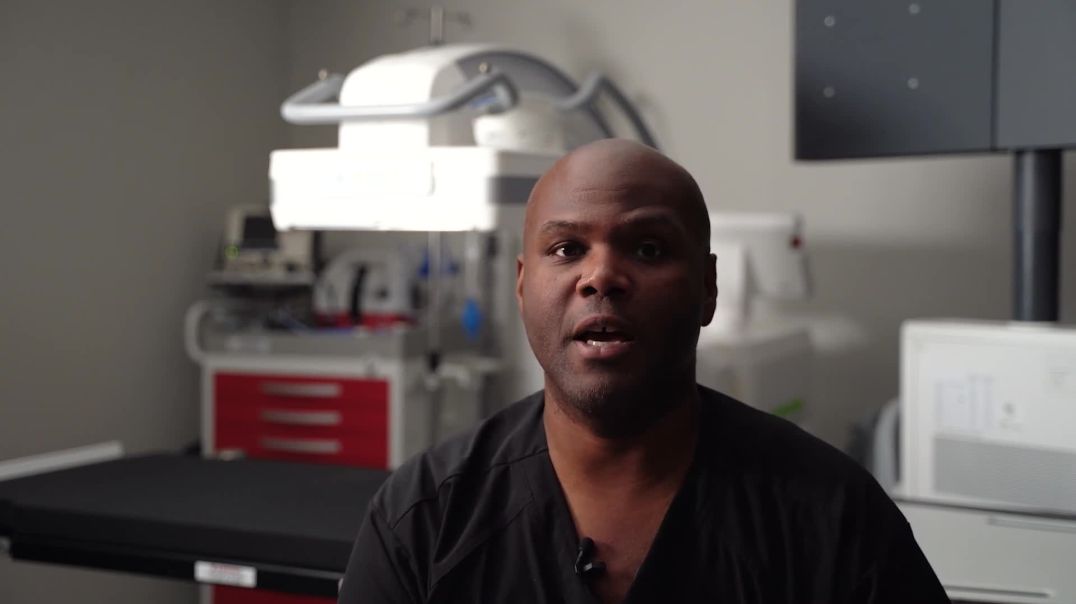Top videos
Ladygra 100mg is a prescription medication used to treat female sexual dysfunction, specifically female sexual arousal disorder and female sexual interest/arousal disorder. Today Order Now !!
Buy Now : https://tinyurl.com/buy-ladygra-100mg
#rsmenterprises #health #healthcare #ladygra100mg #femalesildenafil100mg #femalegenericviagra #womensviagra
There is a product available on the market, Zyhcg 10000, which can be used to treat infertility in men and women and issues associated with children's puberty.The key active ingredient used in the formulation of this product is human chorionic gonadotrophin. You can buy Zyhcg 10000 injection online. This hormone, also referred to as HCG, is extracted from pregnant women's placental cells to assist in treating infertility in both men and women. It brings back a woman's ovary's function of laying eggs, which was lost due to infertility-related complications earlier. It increases the sperm count of males.This product cures many childhood diseases, such as delayed puberty, but has to be used with a prescription; otherwise, it cannot be used. The doctor's prescription, that is the way it is advised to you, decides the dose and treatment duration.Women who are not able to conceive sometimes suffer from psychological issues along with physical issues, because some infertilities are only physical in nature and others are caused due to excessive tension or stress.Buy Zyhcg 10000 injection online at our web store https://www.firstchoicemedss.c....om/zyhcg-10000-iu-in
If you’ve just had breast augmentation in Delhi or are planning it, this video is a must-watch. It explains what the recovery feels like, how long it takes to heal, and what you should expect during the process — in easy, everyday language.
We talk about how recovery works with the flash recovery method, where most patients don’t feel much pain. Instead, there’s a sense of tightness because of the implant stretching the skin. You’ll likely be able to move your arms and even take a bath the next day, thanks to waterproof dressings.
You’ll also understand how to care for your stitches, why a sports bra is necessary 24/7, and what activities to avoid — especially workouts or lifting weights for at least six weeks. We explain how swelling reduces over time and how the implants slowly settle into a more natural position, a process often called “drop and fluff.”
A board-certified plastic surgeon will always guide you on how to sleep, when to start light massage, and what signs to watch out for, like fever or redness. Scar care is also covered — from basic antibiotic ointments to silicone gels or laser options after healing.
This recovery journey is different for everyone, but knowing what to expect makes it easier. If you’re healing now or getting ready for surgery, this video will help you feel more confident and prepared.
If you found this helpful, like the video and subscribe to the channel. And if you have questions, feel free to drop them in the comments — we’re always here to help.
------------------------------------------------------------------------------------------------
About Dr. Rajat Gupta and RG Aesthetics
At RG Aesthetics, India’s best plastic surgeon in India, Dr. Rajat Gupta is at your service! With 15 years of experience, brand certification, and international recognition, Dr. Gupta is the solution to all your contouring needs.
His expertise in liposuction techniques combined with the state-of-the-art technology available at RG Aesthetics ensures we continue providing the most reliable services with incredible, instantaneous results!
Our equipment allows for every kind of liposuction there is – especially the minimally invasive kinds. Dr. Gupta reflects RG Aesthetics’ belief of the patient’s comfort always being paramount. Procedures at RG Aesthetics, under Dr. Rajat Gupta, minimize trauma and speed up recovery time for the best results!
.
.
Schedule a Consultation:
☎ Call: +91-9090696951 / 9560156136
✉️ contact@drrajatgupta.com
⛓️💥 Visit: https://www.drrajatgupta.com
✅https://www.instagram.com/rajatguptadr
✅https://www.facebook.com/drrajatgupta/
✅https://www.linkedin.com/in/rajat-gupta-9a6b23119/
#breastaugmentation #implantrecovery #postsurgerycare #cosmeticsurgeryrecovery #breastimplants
Buy Kamagra 100mg is a potent medicine effectual in treating the condition of Erectile Dysfunction in men. The medicine contains an active substance of Purchase Sildenafil 100mg.
Buy Now : https://tinyurl.com/purchase-kamagra-100mg
#rsmenterprises #health #healthcare #kamagra100mg #sildenafil100mg #edmedicine #genericviagra #maleviagra
Medicinal Mushroom Extract Market Size was valued at USD 11.597 billion in 2023. The Medicinal Mushroom Extract market industry is projected to grow from USD 12.33 Billion in 2024 to USD 19.05 billion by 2032, exhibiting a compound annual growth rate (CAGR) of 5.58%during the forecast period (2024 - 2032).
read more @ https://www.marketresearchfutu....re.com/reports/medic
Our expertise in this domain has enabled us to bring forth effectual Tadalafil Super Active which is used to treat pulmonary arterial hypertension and erectile dysfunctions.
Buy Now : https://tinyurl.com/buy-tadagra-super-active
#rsmenterprises #health #healthcare #tadagrasuperactive #tadalafil20mg #genericcialis #malecialis #edmedicine
Buy Sildalist Strong is a preeminent medication that works to promote solution the chronic health condition, majorly known as Erectile Dysfunction. The oral medication comes with a blend of two active substances such as Sildenafil 100mg and Tadalafil 40mg.
Buy Now : https://tinyurl.com/buy-sildalist-strong
#rsmenterprises #health #healthcare #sildaliststrong #sildenafil100mg #tadalafil40mg #edmedicine #maleedmedicine
Are the cosmetic surgery terms such as liposuction, liposculpture and hi-def liposuction confusing to you? What are these technologies?
This video opens up new horizons on liposuction procedures and their technological advancements in terms of lipo-sculpting and high-definition procedures that are helping many patients get their desired body shape.
Watch this video to know more.
#liposuction #liposculpture #highdefinitionliposuction #3dliposuction #4Dliposuction
-----------------------------------------------------------------------------------------------------
About Dr. Rajat Gupta and RG Aesthetics
At RG Aesthetics, India’s best plastic surgeon, Dr. Rajat Gupta is at your service! With 13 years of experience, brand certification, and international recognition, Dr. Gupta is the solution to all your contouring needs.
His expertise in liposuction techniques combined with the state-of-the-art technology available at RG Aesthetics ensures we continue providing the most reliable services with incredible, instantaneous results!
Our equipment allows for every kind of liposuction there is – especially the minimally invasive kinds. Dr. Gupta reflects RG Aesthetics’ belief of the patient’s comfort always being paramount. Procedures at RG Aesthetics, under Dr. Rajat Gupta, minimize trauma and speed up recovery time for the best results!
Precision Vascular Kentucky specializes in innovative treatments for peripheral arterial disease (PAD), uterine fibroids, and debilitating joint pain affecting hips, knees, and shoulders. Led by Dr. Jean-Baptiste in Louisville, we are dedicated to "Restoring Flow! Saving Limbs! Changing Lives!" through advanced interventional procedures. We excel in treating PAD-related leg and foot pain, particularly for diabetic patients over 50 with non-healing wounds who may face amputation recommendations. Our expertise includes limb salvage through procedures like angioplasty and angiograms. For women suffering from uterine fibroids causing heavy bleeding and pelvic pressure, we offer uterine fibroid embolization (UFE) as an alternative to hysterectomy. Our joint pain treatments, including genicular artery embolization (GAE), provide hope for patients told they're too young for knee or hip replacement. We treat pain and stiffness through minimally invasive procedures that can eliminate what patients describe as "suicide pain." Precision Vascular Kentucky serves Louisville, Kentucky and Southern Indiana, working with multiple insurance providers. Our patient-centered approach combines cutting-edge endovascular treatments with compassionate care, helping patients achieve pain-free movement and improved quality of life when traditional alternatives may not be effective. For more info, visit us at https://precisionvascularkentucky.com/blog/ and https://precisionvascularkentu....cky.com/peripheral-a
Phone: (502) 365-4151
Address: 512 Executive Park, Louisville, KY, 40207, USA
In this video, we discuss the common concerns and misunderstandings about insurance coverage for gynecomastia surgery. Many patients wish for their insurance to cover this procedure, but it's important to understand that this decision is not influenced by the doctor or hospital but solely depends on your insurance policy.
Most insurance companies in India do not cover gynecomastia surgery as it is considered a cosmetic procedure. However, you can communicate with your insurance provider and what documentation we can provide to assist your claim if your insurance policy covers it.
In the video, we also discuss the ethical considerations and why it's important to be honest in your documentation.
Thank you for watching!
Be a part of our Gynecomastia community.
✅ Get insights from our patient community
✅ Ask our board-certified plastic surgeons anything
✅ View the before-and-after patients' results
✅ Connect with other patients & ask them about their experience
✅ First of its a kind initiative in INDIA for patient education and interaction
Join our community: https://drrajatgupta.com/community/
Gynecomastia Helpline: +91 95689 99333
Related Video:
1. Can Gynecomastia be cured non surgically?: https://www.youtube.com/watch?v=kXy5ZyrU-Sk
2. 8 Gynecomastia Surgery Myths: https://www.youtube.com/watch?v=2vzJUdfphc8&t=5s
3. The Ultimate Guide to Gynecomastia Surgery: https://www.youtube.com/watch?v=zFFHjO_uIDw&t=25s
4. Risk involved in Gynecomastia Surgery: https://www.youtube.com/watch?v=vw2diQ-T8K8
------------------------------------------------------------------------------------------------------------------------
About Dr. Rajat Gupta and RG Aesthetics
At RG Aesthetics, India’s best plastic surgeon, Dr. Rajat Gupta is at your service! With 13 years of experience, brand certification, and international recognition, Dr. Gupta is the solution to all your contouring needs.
His expertise in liposuction techniques combined with the state-of-the-art technology available at RG Aesthetics ensures we continue providing the most reliable services with incredible, instantaneous results!
Our equipment allows for every kind of liposuction there is – especially the minimally invasive kinds. Dr. Gupta reflects RG Aesthetics’ belief of the patient’s comfort always being paramount. Procedures at RG Aesthetics, under Dr. Rajat Gupta, minimize trauma and speed up recovery time for the best results!
Schedule a Consultation:
✅ Call: +91 - 9251-711-711
✅ contact@drrajatgupta.com
✅ Visit: https://www.drrajatgupta.com
✅https://www.instagram.com/rajatguptadr
✅https://www.facebook.com/drrajatgupta/
✅https://www.linkedin.com/in/rajat-gupta-9a6b23119/
#gynecomastia #plasticsurgery #insurancecoverage #cosmeticsurgery #healthinsurance #gynecomastiasurgery #medicaladvice #drrajatgupta #delhisurgeon #ckbirlahospital #patienteducation #medicalethics #healthcareindia #rgaesthetics #boardcertifiedplasticsurgeon
Buy Maxgun 100mg is a male enhancement pill effective for improving the problem of sexual disorder in men. This potent and effective medicine helps to boost the overall health of a person by increasing libido and sexual stamina.
Buy Now : https://www.rsmenterprises.in/....product/viewdetail/m
#rsmenterprises #health #healthcare #maxgun100mg #sildenafil100mg #edmedicine #genericviagra #maleviagra
Super Tadapox (Tadalafil 40mg + Dapoxetine 60mg) Tablets opens blood vessels within the penis that allows for an erection when the necessary sexual stimulation is applied.
Buy Now : https://www.rsmenterprises.in/....product/viewdetail/d
#rsmenterprises #health #healthcare #supertadapox #tadalafil40mg #dapoxetine60mg #edmedicine #malecialis #genericcialis
Fildena 100mg is a truly effective pharmacological intervention that brings very impressive outcomes and allows the man to regain his pride in the domain of sensuality and to have highly satisfactory performances. You can buy Fildena 100 mg online in Australia and it gives the opportunity for everyone to put behind their issues and frustrations faced with erectile dysfunction (ED).With sildenafil citrate, the established and reliable active ingredient, Fildena 100mg enhances penile blood flow, thus improving the achievement as well as the maintenance of a firm and long-lasting erection. Because it enables a patient to achieve and maintain an excellent healthy and forceful sensual performance, the medication has potential for alteration.The Fildena 100mg does have a best-strength dosage with true formulation in each tablet for just-right calibrated sildenafil citrate that is prudent in creating outstanding results without overloading the body and delivers maximum efficacy with proper consideration of well-being.Fildena 100mg prioritizes convenience and ease.The medication is consumed in the form of a pill that is swallowed with a glass of water 30 minutes to an hour prior to sensual activity. This efficient mode does not involve much planning, and hence it promotes spontaneity and passion during sensual encounters. With Fildena 100mg, one initiates confidence and extensive sensual pleasure.Buy Fildena 100mg online at our web store https://www.firstchoicemedss.c....om/fildena-100mg.htm
Buy Kamagra 100mg is a potent medicine effectual in treating the condition of Erectile Dysfunction in men. The medicine contains an active substance of Purchase Sildenafil 100mg.
Buy Now : https://www.rsmenterprises.in/....product/viewdetail/k
#rsmenterprises #health #healthcare #kamagra100mg #sildenafil100mg #edmedicine #genericviagra #maleviagra
Buy Online Sildenafil citrate 100mg helps to treat the problem of sensual disorders in men. It works to improve moderate to adverse health issues. Today Order Now !!
Buy Now : https://www.rsmenterprises.in/....product/viewdetail/s
#rsmenterprises #health #healthcare #sildenafil100mg #sildigra100mg #edmedicine #genericviagra #maleviagra
One of the most common fears patients have before plastic surgery is, “Will my results look fake?” Whether it’s rhinoplasty, a facelift, breast augmentation, or a tummy tuck, this concern is completely natural.
In this video we explain how skilled techniques and careful planning ensure that your results look natural and enhance your own features.
Plastic surgery is both a science and an art. It’s not just about medical knowledge but also about artistic shaping, precise technique, and understanding what not to overcorrect.
Breast Augmentation: Choosing the right implant type, size, placement, and sometimes adding fat transfer can create a soft, natural teardrop shape instead of an obvious round look.
Rhinoplasty: Avoiding an overdone, “pinched” or artificial look by respecting the anatomy of the nose, making subtle adjustments, and enhancing your natural proportions.
General Approach: The goal is subtlety — people should notice you look great without being able to tell you had surgery. It’s about making you a better version of yourself, not copying someone else’s features.
If you are planning any cosmetic surgery, make sure to choose a surgeon who understands your desire for a natural look and has the expertise to achieve it. For honest advice and expert guidance, get in touch with us today.
_____________________________________
About Dr Rajat Gupta and RG Aesthetics
At RG Aesthetics, India’s best plastic surgeon, Dr Rajat Gupta is at your service! With 15 years of experience, brand certification, and international recognition, Dr Gupta is the solution to all your contouring needs.
His expertise in liposuction techniques combined with the state-of-the-art technology available at RG Aesthetics ensures we continue providing the most reliable services with incredible, instantaneous results!
Our equipment allows for every kind of liposuction there is – especially the minimally invasive kinds. Dr Gupta reflects RG Aesthetics’ belief of the patient’s comfort always being paramount. Procedures at RG Aesthetics, under Dr Rajat Gupta, minimize trauma and speed up recovery time for the best results!
.
Schedule a Consultation:
☎ Call: +91-9090696951 / 9560156136
✉️ contact@drrajatgupta.com
⛓️💥 Visit: https://www.drrajatgupta.com
✅https://www.instagram.com/rajatguptadr
✅https://www.facebook.com/drrajatgupta/
✅https://www.linkedin.com/in/rajat-gupta-9a6b23119/
#plasticsurgery #naturalresults #rhinoplasty #facelift #breastaugmentation #tummytuck
Erex 100mg is a very common product on sale in the market to cure Ed or impotency in men. sildenafil citrate (100 mg) serves as the prime active ingredient which is employed in the formulation of the medicine. Ed is a condition where a man is unable to reach firm erection sufficient for the intercourse which is a very big issue so erex 100mg can raise the blood towards the genital organ of male and helps them to get firm erection sufficient for the intercourse.You must avoid fatty meal prior to the intake of this medicine.You can buy Erex 100mg tablets online in Australia. This is not an everyday usage medicine which you can use.Anyways, you can take this thirty minutes or one hour before intercourse so that it has to show its effective performance.With the flow of time it will try to improve your performance and will give you more satisfaction.Keep it out of your children and pets(if any) reach. Keep it in a dry and cool place away from the moisture.Buy Erex 100mg online at our web store https://www.firstchoicemedss.com/erex-100mg.html
Ladygra 100mg is an oral medication that works to manage the problem of women's sensual disorder. It contains an active substance of Sildenafil 100mg. Today Order Now!!!
Buy Now : https://tinyurl.com/Buy-Now-Ladygra-100
#rsmenterprises #health #healthcare #ladygra100mg #femalesildenafil100mg #womenssildenafil #femalegenericviagra #womenshealth
People do many things in order to maintain health and fitness but sometimes even after all the efforts people can't shed extra kilos and It can be difficult to regain your body's shape after significant changes in your figure (such as pregnancy or weight gain ), and even a healthy lifestyle may not be able to restore your slender midsection. This causes excessive fat and skin around/ near the abdominal area. In this situation, doctors perform surgery that removes this extra fat and skin and tones the midsection which is known as Tummy Tuck surgery. Tummy tucking is a simple procedure.
A tummy tuck, also known as abdominoplasty, removes excess fat and skin and restores weakened muscles to create a smoother, firmer abdominal profile. This requires a day stay. The excess fat is removed in such a way that there will be less trauma, swelling and the recovery will fast.
The excess fat leads to excess skin. In order to remove that extra skin tummy tuck (Abdominoplasty) procedure is performed. When both tummy tuck and liposuction is performed together it is called Lipoabdominoplasty. 95% of patients undergo a Lipoabdominoplasty procedure. The scar is hidden in the bikini line. Also, the navel is repositioned during the procedure.
For full Tummy tuck surgery, the patient is discharged on the day after the surgery. In order to keep the patients as painless as possible, they are given a long-acting anaesthetic injection into their muscles so that they do not feel any pain and recover fast.
_______________________________________
About Dr Rajat Gupta and RG Aesthetics
At RG Aesthetics, India’s best plastic surgeon, Dr Rajat Gupta is at your service! With 10 years of experience, brand-certification, and international recognition, Dr Gupta is the solution to all your contouring needs.
His expertise in liposuction techniques combined with the state-of-the-art technology available at RG Aesthetics ensures we continue providing the most reliable services with incredible, instantaneous results!
Our equipment allows for every kind of liposuction there is – especially the minimal invasive kinds. Dr Gupta reflects RG Aesthetics’ belief of the patient’s comfort always being paramount. Procedures at RG Aesthetics, under Dr Rajat Gupta, minimize trauma and speed up recovery time for the best results!
For more information please visit our website: https://www.drrajatgupta.com/
For more details,
contact us:+91-9251-711-711 or contact@drrajatgupta.com
#tummytuck #abdominoplasty #lipoabdominoplasty #plasticsurgeon #drrajatgupta
Buy Femalefil 10mg Tablet is a powerful medicine intended only for women's use. The medicine has an active component of Female Tadalafil 10mg. It is effective in improving hypoactive sensual desire disorder in women.
Buy Now : https://www.rsmenterprises.in/....product/viewdetail/t
#rsmenterprises #health #healthcare #femalefil10mg #femaletadalafil10mg #femalegenericcialis #womenshealth #womencialis




















